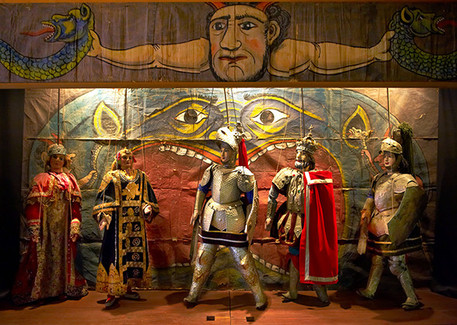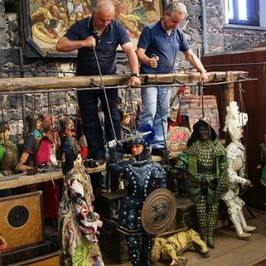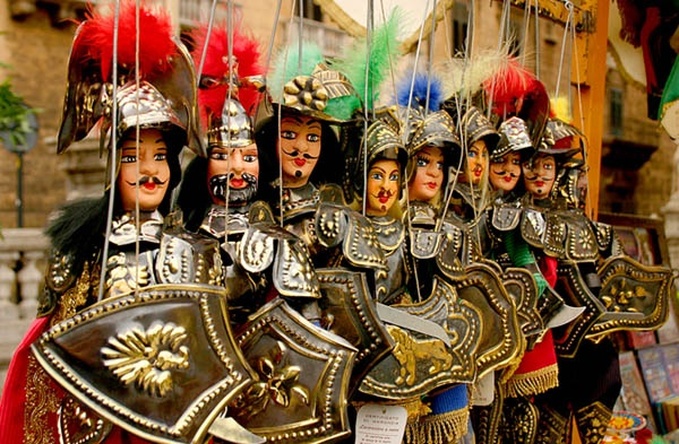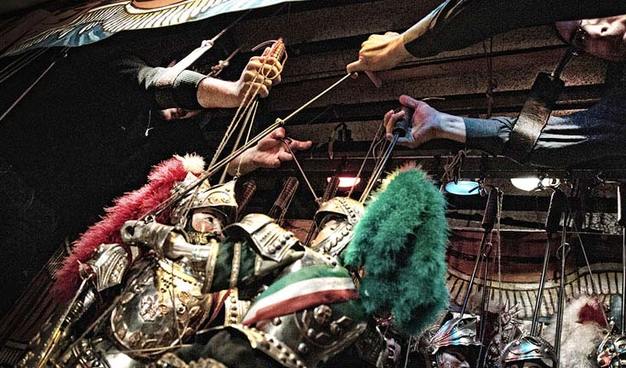 Ancient Greek terracotta marionettes Ancient Greek terracotta marionettes Firstly, a marionetta is a puppet that is manipulated into motion by the use of strings, rods or wires. Marionettes have been found as early as 2000 BC in Egypt, and archaeologists have found terracotta dolls with articulated joints in the graves of children. Aristotle and Plato both wrote about puppetry hundreds of years before the birth of Christ. Some experts claim that the Iliad and the Odyssey would have been performed using marionettes, especially to teach children about the Gods and the battles of good over evil. Italy, being part of the Greek culture before becoming the Roman Empire, was really the birthplace of the marionette. Marionette performances were not just for children, however. They were morality plays for the mostly illiterate masses. Political themed satires would also be portrayed in marionette performances--throwing insults or lewd behavior by marionettes was easier to take from a doll than if delivered by a human performer. Perhaps people made decisions on political matters by watching marionette shows, the same way peoples' political views can be shaped by watching the Daily Show today. In Greece and Rome, clay and ivory dolls dated from 500 BC had articulated arms and legs, with an iron rod extending from the top of their heads. The rod was used to manipulate the doll from above, the same method used in classical Sicilian puppetry. In Sicily, romantic poems were performed in traditional puppet theaters with hand-made marionettes of wood, an art form called L'Opera dei Pupi (Opera of the puppets). Both puppetry and L'Opera dei Pupi and the Sicilian tradition of Cantastori (singers of tales) are rooted in the troubadour tradition in Sicily during the reign of Frederick II, Holy Roman Emperor, in the first half of the 13th century. Still today, you can see this form of puppetry in the puppet theaters of Palermo. The marionettes, which take the form of knights in armor, sword and shield, told their stories and spread throughout Sicily. The shows depicted their amazing feats in small theaters or in the piazza of towns. There were tales of war, rebellion, boasting chivalry. The knights defended their religion, a beloved woman or their lords. They always fought on the side of Right.  The puppets themselves are made of a variety of materials and can be surprisingly heavy--from 25 to 75 pounds! Wood was primarily used for the heads, torso and limbs. Metal is used for the joints between legs and torso. Long, thin rods support the puppet and to move the right arm (holding the sword) while the left holds the shield. The armor is beautifully ornate copper or tin with ornamental designs distinguishing the different characters. Sicilian puppets are operated from above close to the backdrop of the stage. During battle scenes, both puppets and puppeteers often need to run the entire 20 foot length of the stage. Puppeteers obviously need to be in great physical shape to perform these shows. And historically, puppeteers were not only responsible for the performances, voices and acting, but also built the puppets and props and painted backdrops used in the shows. In the 17th century, not long after they had become wildly popular in Italy, marionette performances spread throughout Europe and to England, where Italian puppeteers would exhibit their performances. Marionette were elevated into high art in Czechoslovakia and Germany, where still today they perform full blown operas. And in Sicily, you can still see the "rod" type of marionette show performed. Taking in a marionette show is is a definite must-do for a visit to Sicily. Here are a couple of links...  Piccolo Teatro Dei Pupi in Siracusa, Sicily Teatro dei Pupi Fratelli Napoli --Jerry Finzi If you enjoyed this post, please share it all over the World Wide Web and other planets too. Grazie.
0 Comments
Your comment will be posted after it is approved.
Leave a Reply. |
Categories
All
Archive
June 2024
|




 RSS Feed
RSS Feed
